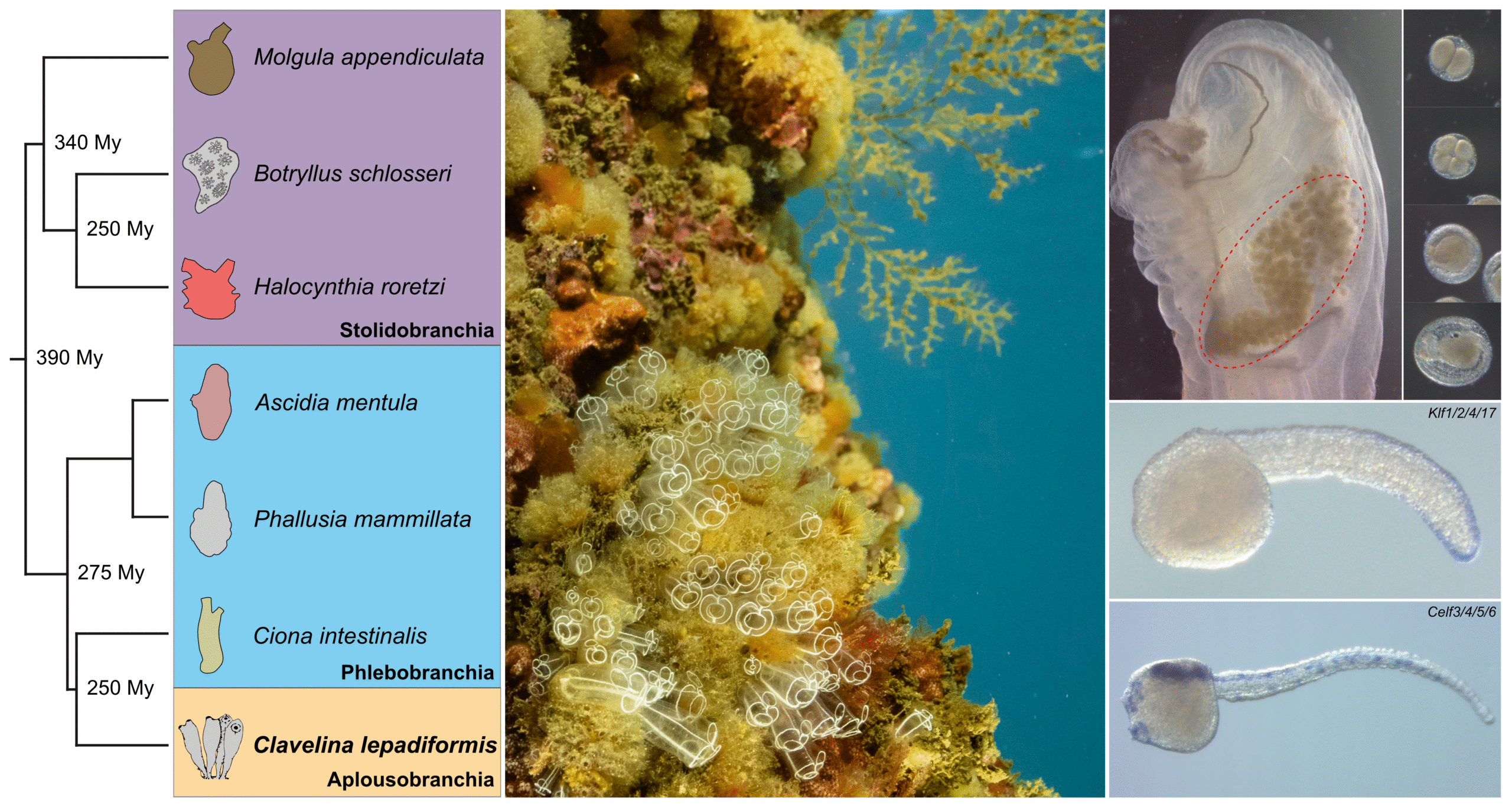A 3-5 months internship proposal by the DEEVA team.
Pioneering embryology in the colonial ascidian Clavelina lepadiformis.
Ascidians are marine invertebrates that belong to the vertebrate sister group. This diverse group of 3,000 species is characterized by a conserved, fast and stereotyped embryonic development with very few cells. By contrast, their genomes are highly divergent with a fast rate of evolution and extensive rearrangements. Since ascidians are good models for functional genomics they offer an excellent opportunity to probe the diversification of developmental mechanisms 1.
We have studied the gene regulatory network that controls peripheral nervous system formation in the ascidian Ciona intestinalis; and have started to probe the modifications that have occurred in other species 2–5. Our team, being located at the marine station of Banyuls-sur-mer, benefits from the access to a variety of ascidian species that cover the different ascidian families. We have developed the embryological methods, transcriptomic and genomic resources for several species.
Clavelina lepadiformis is an iconic local species that belongs to Aplosoubranchia, one of the 3 orders of ascidians that includes only colonial species and whose embryonic development has been poorly studied. To fill this gap, the student will participate in a pioneering work aiming at establishing Clavelina as a tractable model organism. Contrary to classical reference ascidian species, Clavelina is viviparous and embryonic development takes place in the adult pharyngeal cavity. We have already shown that development takes place normally when the embryos are cultured in Petri dishes. The student will be in charge of:
– determining the quality of development under different conditions (temperature, salinity, absence of the protective chorion…)
– producing developmental time tables at different temperatures using time lapse imaging
– testing the effects of small molecule modulators of major signalling pathways (Notch, BMP and Wnt) by morphological description and gene expression analysis (in situ hybridization).
1. Lemaire, P. Evolutionary crossroads in developmental biology: the tunicates. Development 138, 2143–52 (2011).
2. Pasini, A. et al. Formation of the Ascidian Epidermal Sensory Neurons: Insights into the Origin of the Chordate Peripheral Nervous System. PLoS Biol 4, e225 (2006).
3. Coulcher, J. F. et al. Conservation of peripheral nervous system formation mechanisms in divergent ascidian embryos. eLife 9, e59157 (2020).
4. Chowdhury, R. et al. Highly distinct genetic programs for peripheral nervous system formation in chordates. BMC Biol 20, 1–25 (2022).
5. Daric, V., Lanoizelet, M., Mayeur, H., Leblond, C. & Darras, S. Genomic Resources and Annotations for a Colonial Ascidian, the Light-Bulb Sea Squirt Clavelina lepadiformis. Genome Biology and Evolution 16, evae038 (2024).






